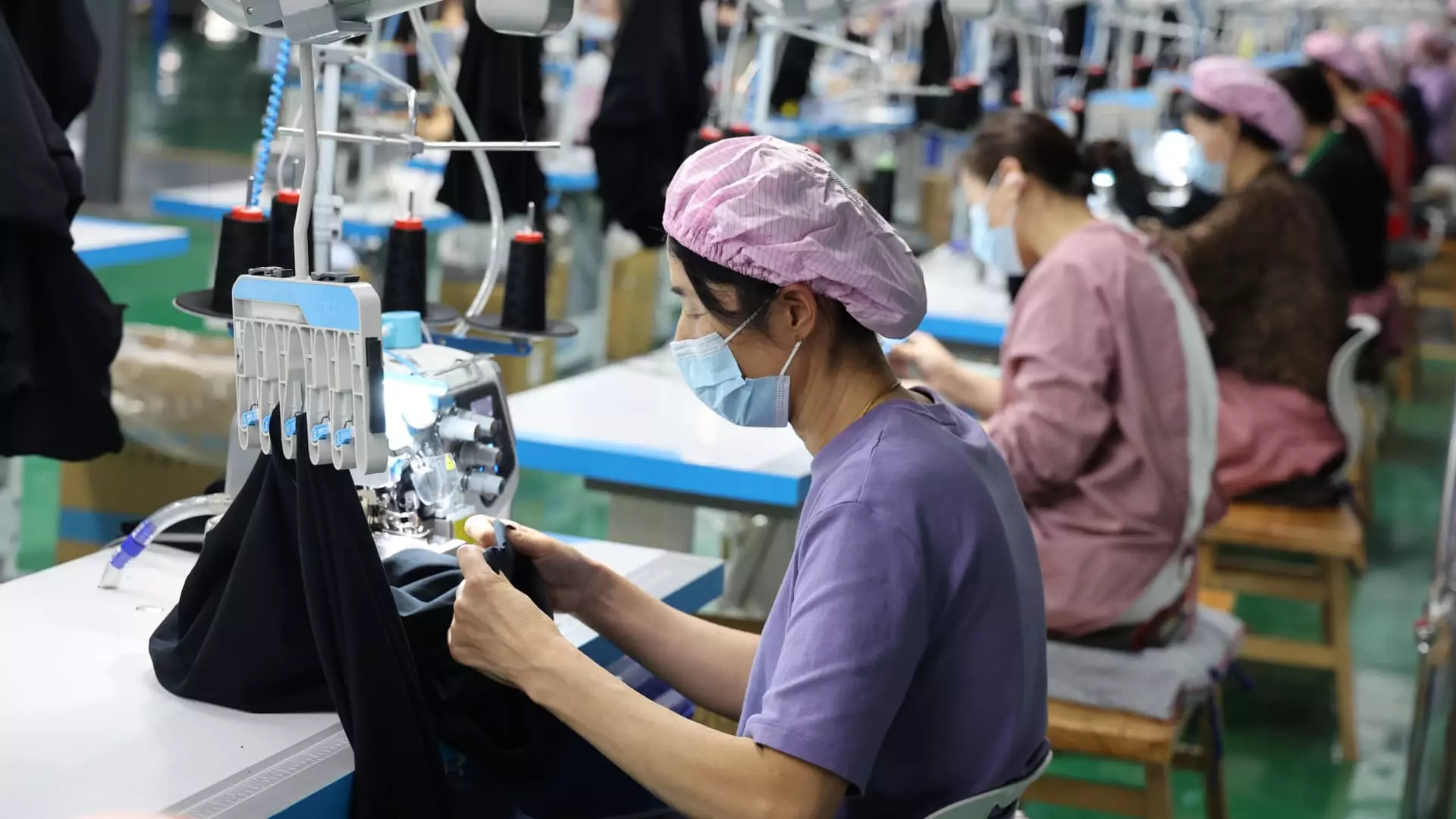In a stark reality, the fallout from escalating U.S. tariffs on Chinese goods is becoming increasingly evident. Chinese manufacturers, unable to sustain production amidst the financial blow, are facing a profound disruption in their operations. Companies from various sectors, especially those producing low-cost consumer goods like toys and sporting equipment, find themselves on shaky ground. Cameron Johnson, a senior partner at Tidalwave Solutions, sheds light on the ongoing struggles, reporting that some factories have temporarily sent half their staff home. While this may not signal a large-scale crisis yet, the sentiment of instability is palpable in key export hubs like Yiwu and Dongguan. The tipping point may soon be reached, exacerbated by the looming threat of prolonged tariffs that continue to cast a dark shadow on the Chinese economy.
With alarming estimates suggesting that around 20 million Chinese workers are linked to U.S.-bound exports, the potential for widespread job losses raises urgent questions about the long-term viability of these jobs. Goldman Sachs’ data reflects the precarious nature of the situation, underscoring how an entire workforce could be affected by tariff escalations. Simply put, the ripple effect on livelihoods and regional economies could be catastrophic.
The Unbearable Weight of Increased Tariffs
As the trade war intensifies, the sudden spike in tariffs—more than 100% in some cases—has jolted small manufacturers into panic mode. Ash Monga, CEO of Imex Sourcing Services, highlighted that for many smaller companies, the abrupt surge is like a financial executioner, potentially leading them to bankruptcy. This revelation underscores the broader implications of these tariffs, as they are not just numbers on a spreadsheet; they are real threats to small businesses struggling to maintain their foothold in a rapidly changing market.
As U.S. President Donald Trump asserts that trade negotiations are on the horizon, China sends mixed signals, officially denying any ongoing talks. The divergence in narratives creates uncertainty—an environment in which business cannot thrive. The fear is that if the trade talks falter, the already tenuous economic situation in China could spin out of control.
China’s Pivot to Domestic Markets
Faced with lost contracts and cancelled orders, Chinese manufacturers are scrambling to find alternative markets. Woodswool, an athleticwear producer, is a case in point. The company swiftly pivoted to domestic sales channels, taking advantage of livestreaming e-commerce to reach local customers. This strategy, while a creative stopgap measure, raises questions about the sustainability of redirecting production to meet domestic demand.
Moreover, major tech firms are stepping in to facilitate this transition by offering subsidies and AI-based tools to help exporters reach new consumers. Yet, even with such support, the financial burden of the tariffs remains heavy; JD.com’s pledge to allocate $27.22 billion to buy goods originally destined for the U.S. might seem substantial but is only a fraction of what China exports annually to the U.S.
Furthermore, transitioning goods produced for a U.S. market to fit local consumer tastes poses significant logistical challenges. There’s a growing awareness that products designed for a suburban American lifestyle may not resonate with urban Chinese consumers, complicating the pivot even further. Manufacturers are therefore exploring innovative marketing channels and engaging directly with consumers on platforms like Douyin, but some experts, such as Ashley Dudarenok, caution that this might not be enough to mitigate the fatigue among consumers and dwindling interest in supporting diverted exports.
The Search for New Frontiers
As trade tensions persist, many Chinese businesses are looking beyond the U.S. to forge new partnerships. Reports indicate a strategic shift toward markets in Europe and Latin America, with some manufacturers beginning to establish firms in India and other Southeast Asian countries to safeguard against future disruptions. The potential for diversification has never been more critical, as international trade routes become increasingly vital to sustaining economic stability.
Businesses like Beijing Mingyuchu, which specializes in bathroom products for the Brazilian market, exemplify this spirit of resilience. While the company has faced challenges from fluctuating exchange rates and high shipping costs, the outlook remains optimistic. Such examples indicate that, even amidst adversity, there are stories of innovation and growth that provide hope for the future.
However, amid this exploration, one must remain aware of the economic hiccups resulting from the U.S.-China tit-for-tat. The overall strategy of merely relocating or diversifying is not foolproof; companies must remain agile to navigate the uncertainties that the current geopolitical landscape presents.
On a larger scale, countries like Ghana are emerging as new hubs for trade, establishing logistics networks to accommodate growing demands and finding ways to exploit the gaps left by the disruption in traditional trade routes. These ventures may not only increase trade resilience but could also catalyze regional development.
The fabric of global trade is changing, and the response from Chinese manufacturers will be crucial in their bid to adapt to a new normal in a complex and uncertain environment.

